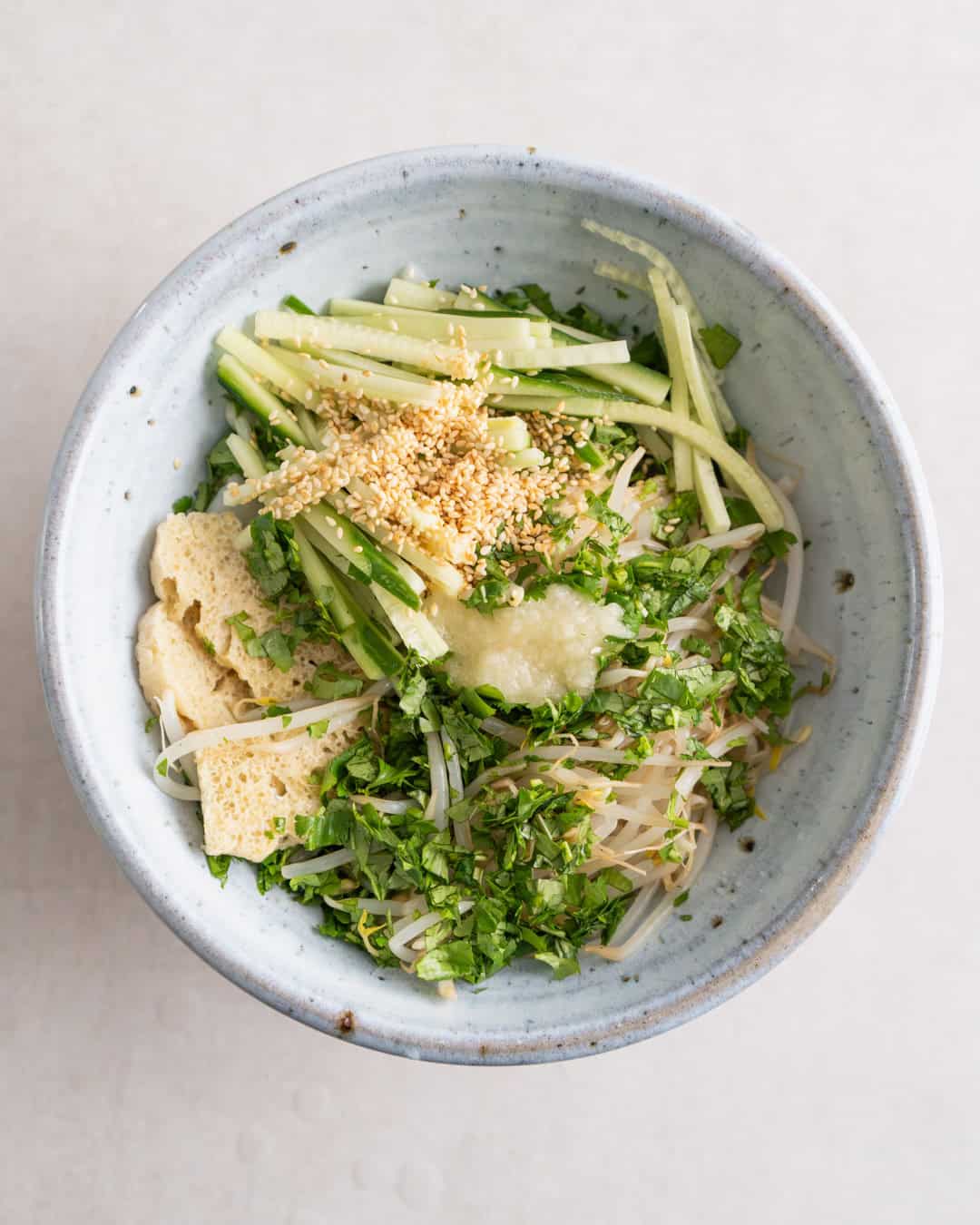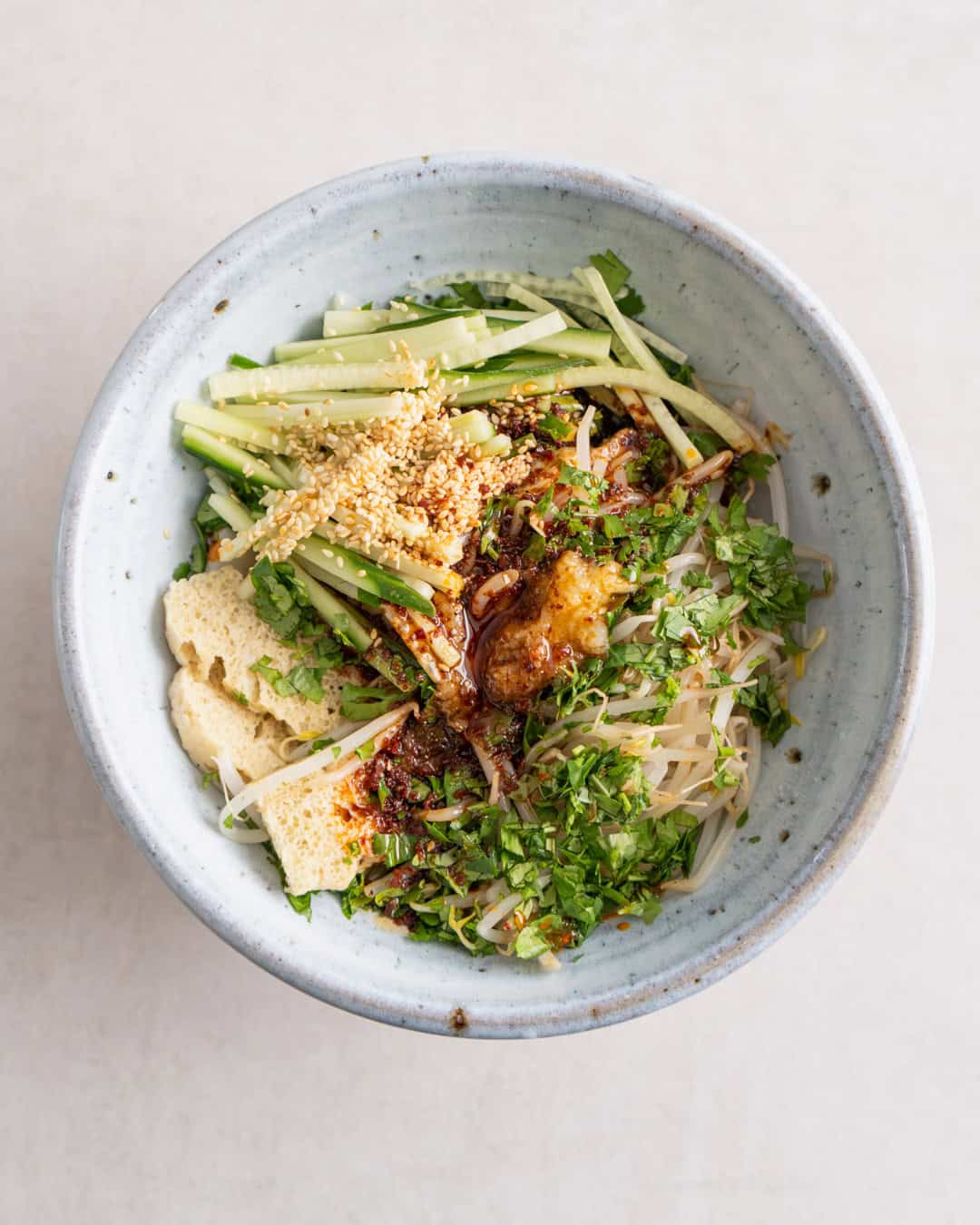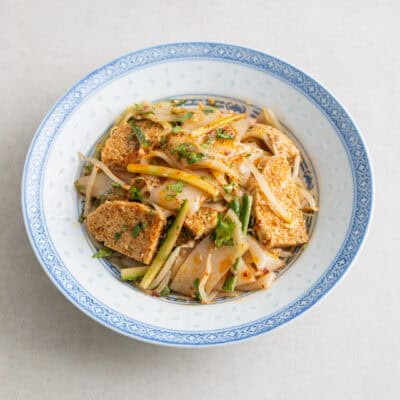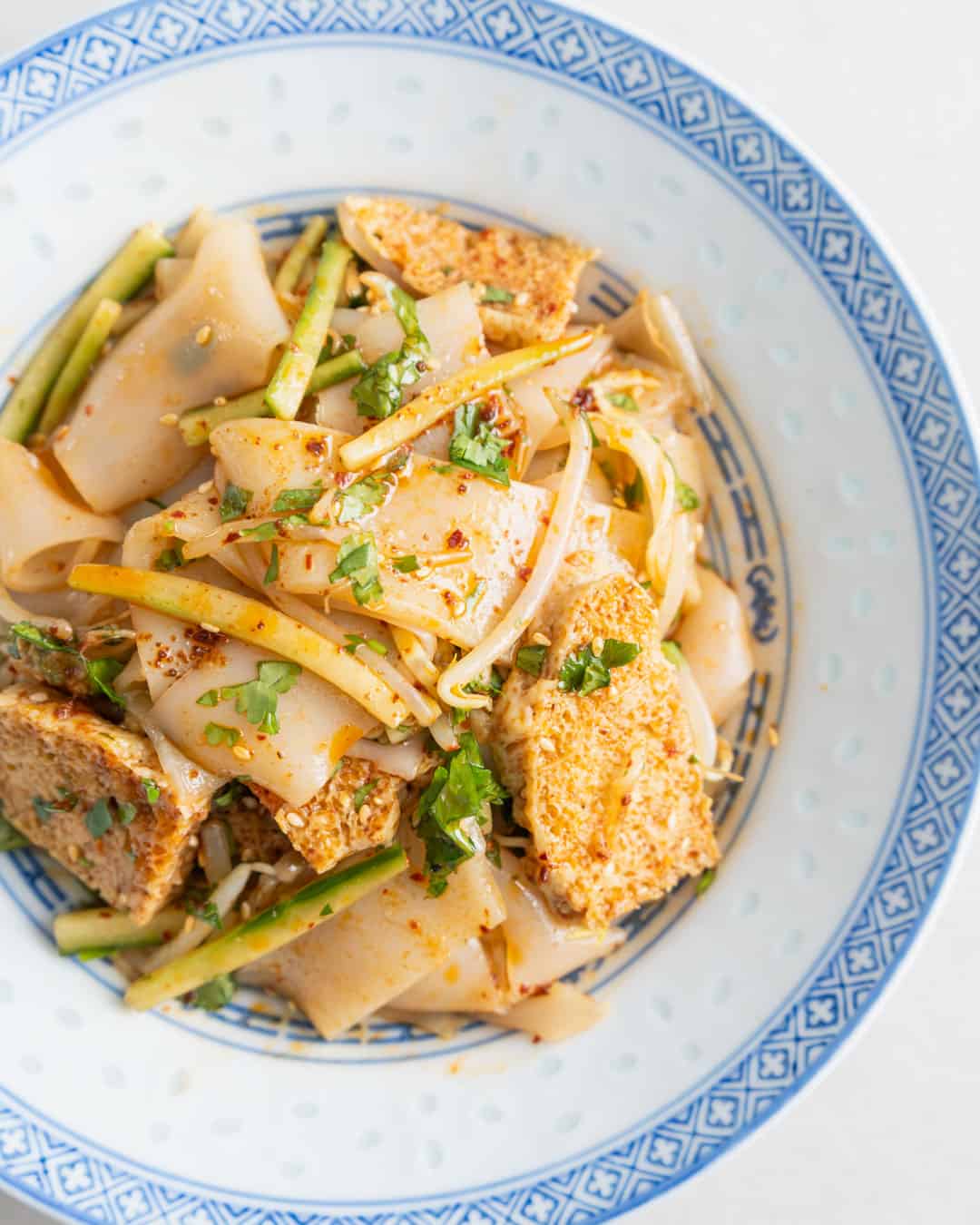Liang Pi (Chinese Spicy Cold Skin Noodles)

What is Liang Pi?
Liang Pi, commonly known as “cold skin noodles,” is a refreshing and spicy dish that comes from Shaanxi, China. This traditionally vegan staple is loved for its unique blend of light, slippery noodles tossed in a bold, tangy sauce with springy wheat gluten and crisp, fresh cucumber. Typically served at room temperature or chilled, Liang Pi is a popular choice in Chinese street food, making it an ideal meal for warm days when you want something flavorful yet light. Its combination of textures and vibrant flavors makes it a delicious way to enjoy authentic Shaanxi-style cold noodles.
History of Liang Pi
Liang Pi has a fascinating history that stretches back hundreds of years, originating as a beloved street food in Shaanxi. The name “cold skin noodles” comes from the soft, smooth texture of the noodles, which are traditionally made by washing flour dough. This dish has evolved over time, gaining popularity throughout China and inspiring various regional versions. Despite these adaptations, the key components—a spicy sauce, chewy noodles, wheat gluten and fresh vegetables—remain unchanged. Today, Liang Pi is a classic dish that captures the essence of traditional Chinese cuisine.
Ingredients You’ll Need & How to Substitute for Liang Pi
- Sichuan Chili Oil: This chili oil provides the signature spicy, numbing flavor of Liang Pi. If you don’t have Sichuan chili oil, you can use regular chili oil or even some fresh, sliced chillies.
- Chinese Black Vinegar (Chinkiang): Known for its rich flavor, Chinese black vinegar gives the sauce a tangy depth. If needed, substitute with rice wine vinegar for a touch of acidity.
- Light Soy Sauce: Adds savory, umami richness to the dressing. You can use normal soy sauce instead. For a gluten-free alternative, try tamari, which offer a similar salty depth.
- Toasted Sesame Oil: Adds a warm, nutty aroma. If unavailable, you can leave it out and use a little more sesame seeds.
- Golden Caster Sugar: Balances the spice and acidity. Light brown sugar works well as a substitute if you don’t have golden caster sugar.
- Bean Sprouts: These add a fresh crunch to the dish. If you can’t find bean sprouts, try shredded cabbage or julienned carrots.
- Sesame Seeds: Provide a toasty, nutty element. Crushed peanuts can be used if sesame seeds aren’t available.
- Garlic: Freshly grated garlic adds depth and pungency.
- Cucumber: Cucumber offers a cooling, refreshing crunch. If unavailable, try adding blanched cabbage instead.
- Fresh Coriander: Brings an herbal, fragrant note to the dish.
- Fresh Liang Pi Noodles: These slippery noodles are the heart of Liang Pi. If you don’t have time to make your own Liang Pi noodles, substitute with cooked rice noodles or even noodles of your choice.
- Steamed Wheat Gluten (Seitan): Adds protein and texture to the dish. If you don’t have steamed wheat gluten, pan-fried tofu can also be used.
How to make Liang Pi (Step-by-Step)
Combine the ingredients. In a bowl, combine the chilli oil, chilli sediment, black vinegar, soy sauce, sesame oil and sugar.
Prepare the rest of the ingredients. Bring a small pan of water to a boil, then blanch the beansprouts for just 30 seconds before transferring them to a bowl of cold water to cool down. Drain and set aside. Toast the sesame seeds in a frying pan until golden and set aside to cool. Grate the garlic into a bowl, add the salt and 1 tbsp of water and stir to mix. Trim the lower stems of the coriander and roughly chop the rest. Julienne the cucumber.
Mix and serve. Add the noodles, sliced gluten, bean sprouts, coriander, cucumber, sesame seeds, garlic water and the sauce to a large bowl.


Mix well to coat the noodles and gluten evenly, then divide over bowls and serve.
Useful Tips
- Prevent sticky noodles: Rinse the noodles under cold water to separate them before serving.
- Balance the spice level: If the sauce is too spicy, add a little extra sugar or vinegar to mellow out the heat without losing flavor.
- Tender wheat gluten: Slice the steamed wheat gluten thinly to ensure it absorbs flavors well and has the ideal texture.
- Chill for extra flavor: For a refreshing taste, chill the noodles, sauce and vegetables separately in the refrigerator for about 30 minutes before serving.
- Customize with extra veggies: Add your favorite vegetables, like shredded carrots or blanched cabbge, to personalize the dish and enhance the crunch.
Why You’ll Love This Liang Pi Recipe
- naturally vegan
- easy to prepare
- mix of textures
- refreshing and tangy
- high in protein
How to Store Liang Pi
To keep your Liang Pi fresh, store each component separately. Place the noodles, sauce, and vegetables in airtight containers and refrigerate for up to 3 days. When ready to eat, simply toss everything together and serve chilled.
**I receive a small commission from affiliate links on this page**

Liang Pi (Chinese Spicy Cold Skin Noodles)
Ingredients
Sauce
- 4 tbsp Sichuan chilli oil plus 2 tsp sediment
- 2 tbsp Chinese black vinegar (Chinkiang)
- 2 tbsp light soy sauce
- 2 tsp toasted sesame oil
- 1 tsp golden caster sugar
Noodles
- 100 g bean sprouts
- 1 tbsp sesame seeds
- 1 large garlic cloves
- 1/4 tsp salt
- 20 g coriander
- 1/4 cucumber (80g)
- 400 g fresh liangpi noodles (or 200g dried rice noodles, cooked according to instructions, then cooled under water)
- 100 g steamed wheat gluten (sliced)
Instructions
- In a bowl, combine the chilli oil, chilli sediment, black vinegar, soy sauce, sesame oil and sugar.
- Prepare the rest of the ingredients: Bring a small pan of water to a boil, then blanch the beansprouts for just 30 seconds before transferring them to a bowl of cold water to cool down. Drain and set aside. Toast the sesame seeds in a frying pan until golden and set aside to cool. Grate the garlic into a bowl, add the salt and 1 tbsp of water and stir to mix. Trim the lower stems of the coriander and roughly chop the rest. Julienne the cucumber. Optionally, refrigerate the ingredients for 30 minutes before serving.
- Add the noodles, sliced gluten, bean sprouts, coriander, cucumber, sesame seeds, garlic water and the sauce to a large bowl. Mix well to coat the noodles and gluten evenly, then divide over bowls and serve.

